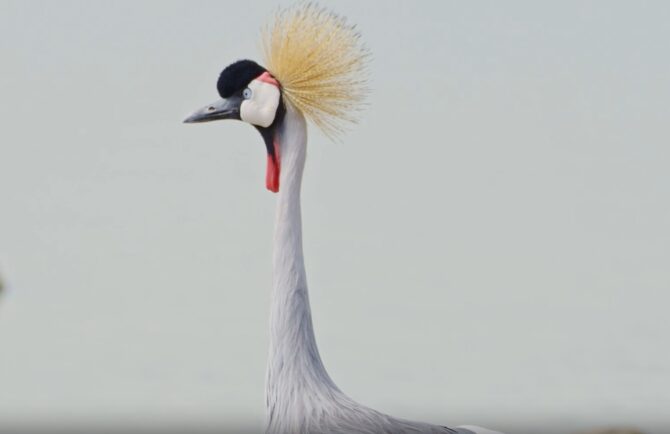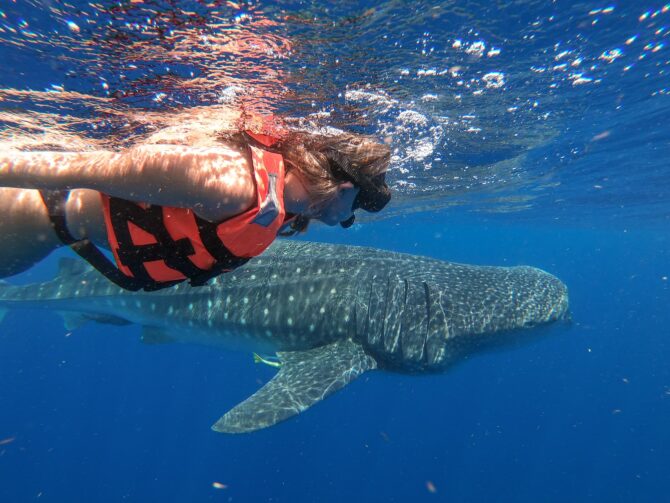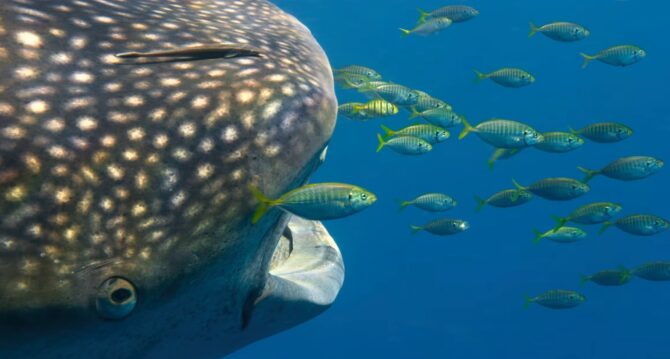Fish: Facts, Characteristics, Types & Pictures
Fish (Pisces) are aquatic vertebrates with ectothermic bodies and adaptive features for aquatic life.
These animals are cold-blooded as their internal organs cannot generate heat, prompting them to derive heat from their surroundings.
This animal class has body modifications that support swimming and aquatic life in most species, with specific organs for excretion, respiration, and blood circulation.
This article will walk you through the characteristics, types, and other interesting facts about fish.
Interesting Facts About Fish
- There are about 36,305 valid fish species worldwide and about 3.5 trillion in total population in the world’s oceans.
- The whale shark is the world’s largest fish species in the ocean; an adult can reach forty feet and weigh up to 19kg.
- We can find birds on every continent except Antarctica, but you can find fish everywhere, including in Antarctica. Remarkably, there are some species native to the Antarctic waters, including the Antarctic Silverfish, Antarctic Toothfish, Antarctic Dragonfish, and Emerald Rockcod.
- While most fishes are cold-blooded or endothermic, some species have warm-blooded traits, keeping their core temperatures higher than their surroundings.
- This fact about the mudskipper might fascinate you; while it is a fish, it burrows and lays its eggs in mud flats.
- According to the International Union for Conservation of Nature (IUCN), one-third of freshwater fish face extinction.
Characteristics of Fish
Like other classes in the animal kingdom, these marine animals have typical characteristics crucial to grouping the breed and genus of animal class members.
Reproduction
While subtle differences exist in the reproduction of various species, most fishes practice external fertilization, prompting them to lay and fertilize eggs outside their bodies.
This mode of fertilization may account for the high mortality rate in fish eggs but assures reproductive success in water bodies.
Testes and ovaries are the class’s primary reproductive organs; however, secondary organs like the genital papilla, from which the sperm or eggs are released, increase reproductive fitness.
Unsurprisingly, a few of the 36,305 valid species fertilize internally and carry out some internal embryonic developments, including rays, sharks, chimaeras, and skates.
These fishes have pelvic fins with claspers that insert sperm into the female’s cloaca during copulation.
Most male species in the Pisces class have two testes, but some have one, inseminating the jellylike, shell-less eggs internally or externally.
Some fishes, like wrasse and parrotfish families, are sequential hermaphrodites, able to switch sexes at some point in life.
Black hamlets are synchronous hermaphrodites, performing as either sex at any point.
The anglerfish have a more intriguing mode of sexual reproduction where the males, smaller than the females, exchange their sperm to fertilize eggs for food and protection; this mode of reproduction is “sexual parasitism.”
Some species, including platies, swordtails, mollies, and guppies, give birth to their young.
Cold-blooded Vertebrates
Like their freshwater counterparts, amphibians, fishes are cold-blooded or ectothermic creatures, lacking internal physiological processes to regulate body temperature.
Therefore, this class’s members rely on their surrounding environment to regulate their body temperature.
Unlike amphibians and reptiles that bask in the sun to warm and cool down inside shades and water bodies, fishes only have the surrounding water to determine their body temperature.
However, some Pisces species have developed physiological modifications over the years to control their body temperature.
Bony or Cartilaginous Internal Skeleton
Eons of years of evolution have seen fishes with many exact features draw disparities in their skeletal composition.
Some Pisces species have bony skeletons, while others’ skeletons comprise cartilage — a shock-absorbing, friction-reducing, strong, flexible tissue capable of determining structure and shape.
Species like sharks, skates, and rays have a cartilaginous skeletal composition instead of a bony skeletal frame; little wonder these species grow largely due to their flexible yet tough structural support.
Streamlined Bodies
Aquatic animals have developed specific body modifications for survival; hence, fishes have evolved to have streamlined bodies to adapt to aquatic life.
Their streamlined bodies reduce drag and friction during movement, saving energy and supporting prolonged swimming.
Streamlined bodies are generic to fishes, but their exact forms depend on their position in the food chain, how they feed, and their defensive strategies and modifications.
Modified Locomotive and Respiratory Mechanisms
Like streamlined bodies, fins help fishes to swim. Species from other classes have other means of locomotion, but Pisces rely on their fins to move.
Most species swim with their fins, but others, including the flying fish and frogfish, use theirs for gliding and crawling, respectively.
Various species have fins in different body locations, while some have lost fins as they evolved.
Still, we can count up to six fin types: pelvic, pectoral, adipose, dorsal, anal, and caudal fins.
Some species have modified their fins to reproduce, like sharks with claspers on their pelvic fin to deliver sperm.
Fishes also have a respiratory organ typical of their class. While most terrestrial species have lungs, these aquatic vertebrates have gills to respire.
The gills (feathery-structured tissues) extract molecules of oxygen dissolved in water, releasing carbon dioxide into their surroundings.
Gills are relatively large compared to a fish’s body, enabling gaseous exchange, as the size of the surface area is crucial to the process.
They are also rich in blood vessels, having thousands of them to maximize oxygen extraction.
Lateral Line System
Irritability is typical of all creatures, but fishes are conscious of their environments via a lateral line system, a row of spots that help them sense disturbances in the surrounding environments.
These sensors along the body surface from its head consist of neuromast-containing pores that discover motion and water pressure changes.
These pores connect to the surrounding water, vibrating with flow changes.
Therefore, they can use whatever input they gather to avoid predators, hunt, communicate, or socialize as a school.
Deep ocean zones where sight is limited force the species typical of that habitat to rely on their touch sense (lateral line system), hearing, and olfactory senses.
Types/Classification of Fish
Scientists have grouped fishes into two classes:
- Placodermi (extinct)
- Chondrichthyes
- Osteichthyes
Placodermi
Placoderms are an extinct class that roamed the earth for about 70 million years until they went extinct about 360 million years ago during the fin de siècle of the Devonian period.
Armor was the fashion in vogue as these bottom-dwellers had armored plates covering their skins.
While they evolved from jawless ancestors, this class evolved an adaptive invention that saw them develop jaws.
An example of the Placoderms is the Bothriolepis, a genus of over sixty species that became extinct about 360 million years ago.
Chondrichthyes
The name Chondrichthyes translated from ancient Greek, means “khóndros” (cartilage) and “ikhthús” (fish).
As the name implies, Chondrichthyes are cartilaginous fishes. However, having a cartilaginous internal skeletal system is one of the Chondrichthyes’ numerous features.
They are exclusively marine, with separate external gill openings of five to seven-gill pairs.
These fishes fertilize internally, having claspers on their pelvic gulls for reproduction, and lack air bladders.
The Selachi and Bradyodonti are subclasses under Chondrichthyes.
Selachi species have well-developed fins with cartilaginous rods on their pectoral fins.
Two extant orders, the Proto selachl and Euselachi, are grouped under the Selachi subclass.
Species like the Hammer-headed shark, Electric Ray, and skates that are exclusively marine, with separate external gill openings of five pairs, fall under the Euselachi order.
Bradyodonti are species with small mouths and bounded lips, boneless speculum-enclosed gill openings, and visible holostylic jaw suspension; the males have frontal claspers on their heads.
The Bradyodonti subclass includes the Eubradyodonti, where the extinct genus Helodus fell, and the Holocephali orders, where Chimaeras are grouped.
Osteichthyes
Unlike the cartilaginous species, Osteichthyes have bony skeletons and proudly sit as the most diverse Pisces group, with about 28,000 species.
This group consists of marine, fresh, and brackish water species without claspers.
Some species have scales that form the exoskeleton, and most have air bladders. Osteichthyes subclasses include the Crossopterygii and Actinopterygii groups.
Species with lobed and massive fins fall under the Crossopterygii subclass. While the subclass is largely extinct, the Dipnoi order includes extant species, including the lungfish.
However, the Actinopterygii subclass is more diverse, consisting of species that inhabit freshwater and marine habitats; it includes the Chondrostei, Holostel, and Telosteti superorders, further divided into forty-five orders.
The flyingfish, salmon, porcupinefish, and mudskippers are under the Actinopterygii class.
Frequently Asked Questions
Are all fish aquatic animals?
Yes, all fish are aquatic. Body modifications and adaptive features for a full-time aquatic life make a vertebrate a fish.
Do all fish have scale-covered bodies?
No. Possessing a scale-covered body is not one of the defining traits of the Pisces class. While many species have scales, some like the lamprey and catfish do not have scales.
Do all fish species lay eggs?
Some fish species, including platies, swordtails, mollies, and guppies, give birth to their young.
Which jawless fish species still exist?
Lampreys and hagfishes are the two extant groups of jawless fishes. Lampreys have toothed funnel-like sucking mouths, while hagfishes have two pairs of tooth-like arrangements on a tongue-like projection.
Wrap Up
With thousands of species bearing similar traits under this class, diversity cannot cease to exist.
This class is crucial to their local ecosystems as esteemed members of the food chain, serving as food to some species and preying on others to promote ecological balance.
It intrigues us to have these species with us, contributing to nature’s unbridled variety.





